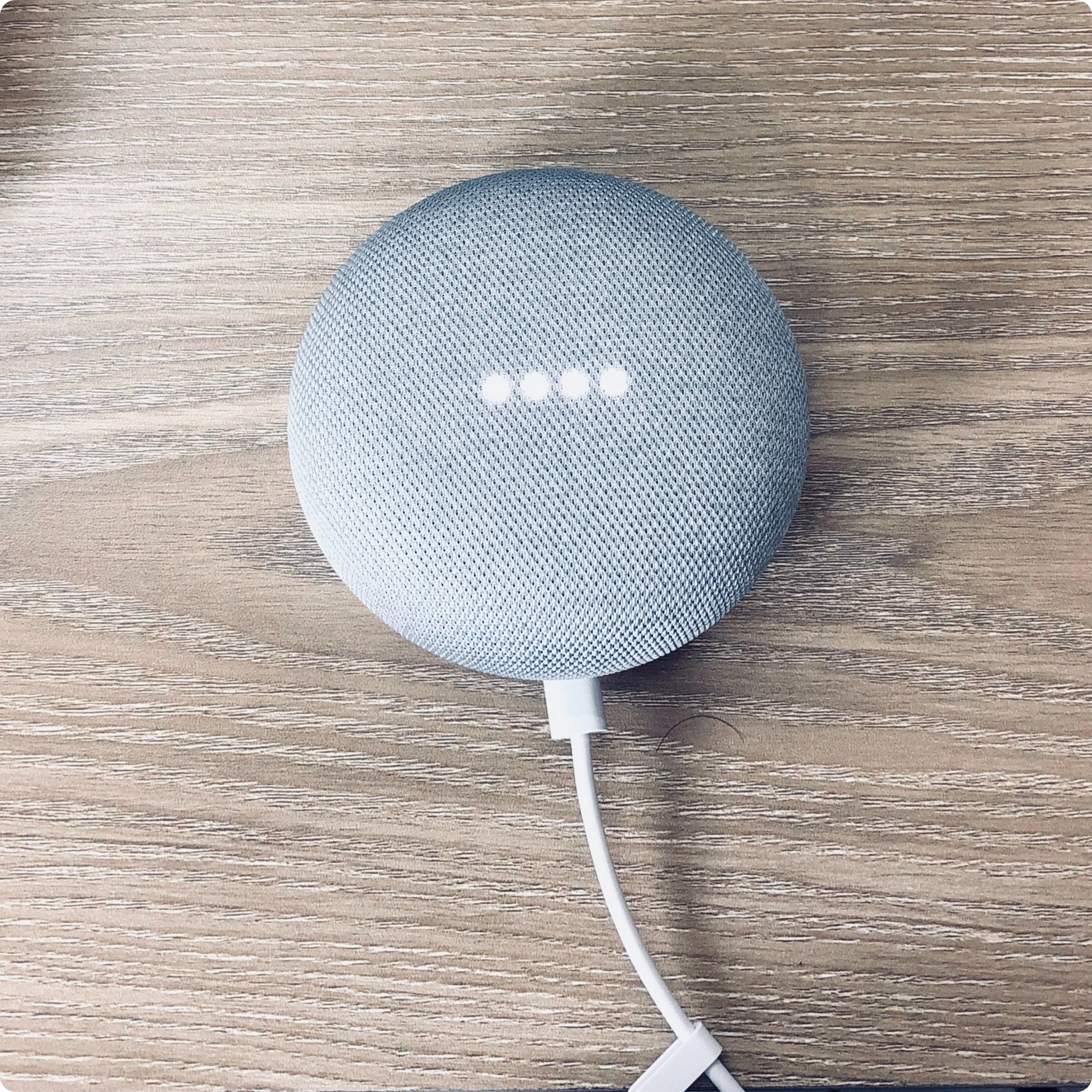What should online merchants know?
Voice Commerce is when consumers speak commands to the Virtual Assistants (Siri, Alexa, Google, Cortana, Bixby) that are integrated into their mobile phones, tablets, or smart speakers so that they can search for and purchase products without looking at or ever touching a screen.
For merchants operating webshops and selling online, Voice Commerce (V-Commerce) is worth talking about for three reasons. First, it is about your creating an improved customer experience that creates loyalty. Infact, according to Shopify, customer satisfaction and adoption for Voice Commerce is high: 80% of consumers who have made purchases with Voice Assistants report themselves satisfied with the experience. To not enable Voice Commerce for your online business seems a missed opportunity. Second, Voice Commerce is about having your goods and services easily found by would-be customers. Think of Voice Commerce as another avenue in which your products can be found. Third, the combination of an improved customer journey and a hands-free shopping experience translates into increased sales and performance (i.e., reduced risk of abandoned shopping carts.)
However, despite the three benefits for merchants, Voice Commerce is a technology based on shifting developments in Artificial Intelligence (AI), and webshops must be configured to be V-Commerce friendly. According to SoundHound AI, “adding voice to existing apps and offering Voice Assistants in-store are emerging as ways they can control the experience, reduce friction and competition, and retain customer data…(but to be)… effective, any proprietary voice shopping app or in-store voice experience must be responsive and accurate — delivering on the promise of convenience and reducing frustration…Retail brands must look at solutions that are more responsive than simply laying voice on top of existing applications or throwing their product catalogs into the jumble with third-party speakers.” This is a long way of saying that merchants need to deliberately set themselves up to be V-Commerce friendly.
In this article, we will dig deeper into the benefits, concerns, and what you as a merchant can do to take advantage of the marketplace’s growing interest in voice shopping.

3 Benefits of V-Commerce for Merchants
For merchants, Voice Commerce can improve customer experience, brand visibility, and overall sales. Let’s take a closer look at the benefits for a deeper understanding of why you should consider integrating the still new— yet increasingly popular— voice shopping trend into your operating plan.
1- Improved customer experience: Without the need to click and search, customers use their voices to inquire about prices, brands, and offerings, and can make a purchase “friction-free”: quickly and conveniently, without multiple steps. The technology is based on Artificial Intelligence (AI) so Virtual Assistants quickly learn the shopper’s preferences and can provide tailored recommendations. V-Commerce can increase word-of-mouth recommendations, online ratings, and even loyalty.
2- Enhanced brand visibility and recognition: If a consumer wants to purchase a certain type of product without knowing which brand, Voice Assistants can make recommendations. Optimizing your presence on voice platforms by applying voice search optimization (VSO) methods can ensure your products appear in the voice searches. In short, V-Commerce can helps amplify your exposure online and gets you noticed by more potential customers.
3- Increased sales and revenue: A consumer can find your product easily a voice command— even while occupied with other activities. Buying your product is quick and painless thanks to stored payment and shipping data. Then, at a later point, the (now) customer can repurchase and leave recommendations. A customer experience that makes online shopping friction-free, coupled with your products being automatically recommended by Voice Assistants, can boost your business.

Optimize Your Copy for Voice Shopping
Voice Search Optimization (VSO)
Similar to optimizing your webshop’s text to improve sales in general, which we wrote about here and here, you as a merchant must optimize your product descriptions for voice search if you want to open up this business enhancing possibility. Mailchimp’s insightful article, “Voice Shopping, Enhancing Business Performance and Sales” provides some guidance and reminds us that voice search is a type of search engine optimization (SEO) so text descriptions (“copy”) are important. And remember: voice search is query-based, so a would-be customer is not served multiple answers on a screen as when searching via a search engine like Google. Instead, he or she is given one answer– the first result (“position zero” on the search engine result pages- SERPs) by Voice Assistants. Create content designed to be featured in position zero and with respect to the conversational nature of voice searches:
1- Establish Clear and Concise Product Information. When optimizing for voice commerce, it’s first important to provide clear and concise product descriptions that are easily understood through Voice Assistants. Use bullet points or concise sentences to highlight key features and benefits. Include relevant details like dimensions, colors, sizes, and other specifications that customers may inquire about using voice commands.
2- Ensure natural language and a conversational tone in product descriptions. You can perform long-tail keyword research to find questions consumers might ask when voice shopping. They’re longer and more likely to be full questions rather than keywords or disjointed queries. And because voice searches are more conversational (like talking to a shop assistant in a retail store), weave in conversational content in your product descriptions and website landing pages to align with how users ask questions verbally.

Ready, steady… and GO!
As a merchant, implementing Voice Commerce is one step closer to creating a complete omnichannel customer experience. Naturally, optimizing your e-commerce store for voice shopping to ensure a seamless, user-friendly shopping trip for customers using Voice Assistants is key. You do not want to miss any chance to reach your target customers and make a sale. Besides ensuring text descriptions on your website are optimized for voice search with Voice Search Optimization (VSO) techniques, here are some final– more technical— strategies to remember. With all this advice, you will surely be able to boost your business and stay in step with this evolving shopping trend:
1- Use structured data markup. Search engines need data to understand a web page. Include essential information about your online store that customers may be asking about, giving you a better opportunity to rank in search results. Implement structured data markup, such as schema.org, to provide specific details about your products, pricing, availability, and other relevant data.
2- Think local search: If you operate a local business, optimizing for local search can help you rank in voice search results to capture users nearby. You should use location-specific keywords and relevant information about your business’s location, hours of operation, and so forth.
3- Create FAQ pages: Frequently asked questions (FAQ) pages can help your content rank higher, giving you a better chance to be featured in position zero. Create FAQ sections that address common voice-based queries (in the way that consumers may speak) and optimize meta tags, headings, and descriptions with voice-friendly keywords.
4- Apply a mobile-first approach: Many people use Voice Assistants on their smartphones to voice shop. Optimizing your website for mobile ensures a consistent experience across channels and improves your chances of ranking highly. Think: responsive design, fast loading speed, attractive layout, easy navigation, and checkout functionality in terms of payment options.
5- Integrate with Voice Commerce: Explore adding features into your e-commerce store such as voice-activated shopping carts, voice-based payment options, or even developing a custom voice skill or action for popular Voice Assistants.
6- Test and Recalibrate: Regularly monitor and analyze voice search data and user interactions on your website. By understanding how customers are using voice commands and engaging with your website, you can make data-driven decisions and refine your optimization strategies accordingly.

Samara H. Johansson
Content Manager, Nets E-Commerce
With 15+ years of experience in strategic marketing and communications roles, for Nets I focus on presenting e-commerce market insights in a way that is easy to understand and practical.
- Topics


